 W
WThis is a list of federally recognized Native American tribes in Oregon.
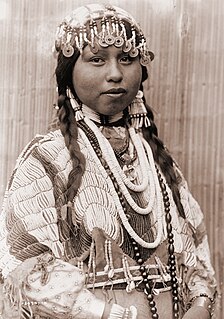 W
WThe Native American peoples of Oregon are the set of Indigenous peoples who have inhabited or who still inhabit the area delineated in today's state of Oregon in the Pacific Northwest region of the United States. While the state of Oregon currently maintains relations with nine federally recognized tribal groups, the state was previously home to a much larger number of autonomous tribal groups, which today either no longer exist or have been absorbed into these larger confederated entities.
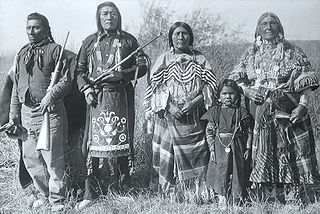 W
WThe Bannock tribe were originally Northern Paiute but are more culturally affiliated with the Northern Shoshone. They are in the Great Basin classification of Indigenous People. Their traditional lands include northern Nevada, southeastern Oregon, southern Idaho, and western Wyoming. Today they are enrolled in the federally recognized Shoshone-Bannock Tribes of the Fort Hall Reservation of Idaho, located on the Fort Hall Indian Reservation.
 W
WThe Burns Paiute Tribe of the Burns Paiute Indian Colony of Oregon is a federally recognized tribe of Northern Paiute Indians in Harney County, Oregon, United States.
 W
WThe Cayuse are a Native American tribe in what is now the state of Oregon in the United States. The Cayuse tribe shares a reservation and government in northeastern Oregon with the Umatilla and the Walla Walla tribes as part of the Confederated Tribes of the Umatilla Indian Reservation. The reservation is located near Pendleton, Oregon, at the base of the Blue Mountains.
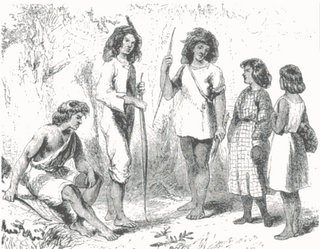 W
WThe Chetco are a tribe of Native Americans who originally lived along the lower Chetco River and Winchuck River in Curry County in the U.S. state of Oregon. The name Chetco comes from the word meaning "close to the mouth of the Chetco River" in their own language, which is part of the Athapascan languages. Although they were once one of the largest tribes on the Pacific coast of Oregon, "the last known full-blooded Chetco" living on the Chetco River died in 1940.
 W
WChinookan peoples include several groups of indigenous people of the Pacific Northwest in the United States who speak the Chinookan languages. Chinookan-speaking peoples reside along the Lower and Middle Columbia River (Wimahl) from the river's gorge downstream (west) to the river's mouth, and along adjacent portions of the coasts, from Tillamook Head of present-day Oregon in the south, north to Willapa Bay in southwest Washington. In 1805 the Lewis and Clark Expedition encountered the Chinook Tribe on the lower Columbia. There are several theories about where the name ″Chinook″ came from. Some say it is a Chehalis word Tsinúk for the inhabitants of and a particular village site on Baker Bay, or "Fish Eaters". It may also be a word meaning "strong fighters".
 W
WThe Clatsop are a small tribe of Chinookan-speaking Native Americans in the Pacific Northwest of the United States. In the early 19th century they inhabited an area of the northwestern coast of present-day Oregon from the mouth of the Columbia River south to Tillamook Head, Oregon.
 W
WThe Confederated Tribes of the Coos, Lower Umpqua and Siuslaw Indians of Oregon are a federally recognized Native American tribe of Hanis Coos, Miluk Coos, Lower Umpqua, and Siuslaw people in Oregon. They are indigenous peoples of the Plateau.
 W
WThe Fort McDermitt Paiute and Shoshone Tribe is a federally recognized tribe of Northern Paiute and Western Shoshone peoples, whose reservation Fort McDermitt Paiute and Shoshone Tribes of the Fort McDermitt Indian Reservation spans the Nevada and Oregon border next to Idaho, USA. The reservation has 16,354 acres in Nevada and 19,000 acres in Oregon.
 W
WThe Confederated Tribes of the Grand Ronde Community of Oregon (CTGR) consists of twenty-seven Native American tribes with long historical ties to present-day western Oregon between the western boundary of the Oregon Coast and the eastern boundary of the Cascade Range, and the northern boundary of southwestern Washington and the southern boundary of northern California. The community has an 11,288-acre (45.7 km2) Indian reservation, the Grand Ronde Indian Reservation, which was established in 1855 in Yamhill and Polk counties.
 W
WThe Indigenous Peoples of the Great Basin are Native Americans of the northern Great Basin, Snake River Plain, and upper Colorado River basin. The "Great Basin" is a cultural classification of indigenous peoples of the Americas and a cultural region located between the Rocky Mountains and the Sierra Nevada, in what is now Nevada, and parts of Oregon, California, Idaho, Wyoming, and Utah. The Great Basin region at the time of European contact was ~400,000 sq mi (1,000,000 km2). There is very little precipitation in the Great Basin area which affects the lifestyles and cultures of the inhabitants.
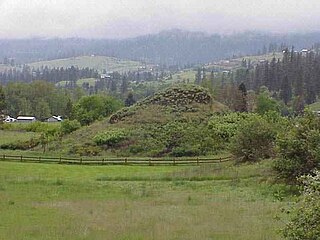 W
WIndigenous peoples of the Northwest Plateau, also referred to by the phrase Indigenous peoples of the Plateau, and historically called the Plateau Indians are indigenous peoples of the Interior of British Columbia, Canada, and the non-coastal regions of the United States Pacific Northwest states.
 W
WHin-mah-too-yah-lat-kekt, popularly known as Chief Joseph, Young Joseph, or Joseph the Younger, was a leader of the Wal-lam-wat-kain (Wallowa) band of Nez Perce, a Native American tribe of the interior Pacific Northwest region of the United States, in the latter half of the 19th century. He succeeded his father Tuekakas in the early 1870s.
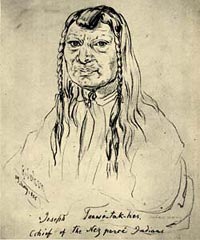 W
WTuekakas, commonly known as Old Chief Joseph or Joseph the Elder, was a Native American leader of the Wallowa Band of the Nez Perce. Old Joseph was one of the first Nez Percé converts to Christianity and a vigorous advocate of the tribe's early peace with whites. In 1855 he aided Washington's territorial governor and set up a Nez Percé reservation that expanded from Oregon into Idaho. The Nez Perce agreed to give up a section of their tribal lands in return for an assurance whites would not intrude upon the sacred Wallowa Valley.
 W
WThe Kalapuya are a Native American ethnic group, which had eight independent groups speaking three mutually intelligible dialects. The Kalapuya tribes' traditional homelands were the Willamette Valley of present-day western Oregon in the United States, an area bounded by the Cascade Range to the east, the Oregon Coast Range at the west, the Columbia River at the north, to the Calapooya Mountains of the Umpqua River at the south.
 W
WKamiakin (1800–1877) (Yakama) was a leader of the Yakama, Palouse, and Klickitat peoples east of the Cascade Mountains in what is now southeastern Washington state. In 1855, he was disturbed by threats of the Territorial Governor, Isaac Stevens, against the tribes of the Columbia Plateau. After being forced to sign a treaty of land cessions, Kamiakin organized alliances with 14 other tribes and leaders, and led the Yakima War of 1855–1858.
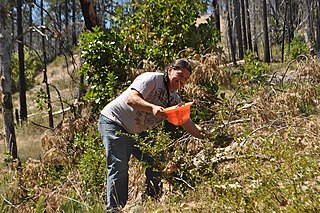 W
WThe Karuk people are an indigenous people of California, and the Karuk Tribe is one of the largest tribes in California. Karuks are also enrolled in two other federally recognized tribes, the Cher-Ae Heights Indian Community of the Trinidad Rancheria and the Quartz Valley Indian Community.
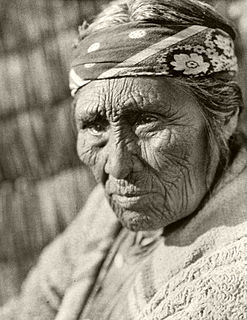 W
WThe Klamath people are a Native American tribe of the Plateau culture area in Southern Oregon and Northern California. Today Klamath people are enrolled in the federally recognized tribes:Klamath Tribes, Oregon Quartz Valley Indian Community, California.
 W
WThe Klickitat are a Native American tribe of the Pacific Northwest. Today most Klickitat are enrolled in the federally recognized Confederated Tribes and Bands of the Yakama Nation, some are also part of the Confederated Tribes of the Grand Ronde Community of Oregon.
 W
WLooking Glass was a principal Nez Perce architect of many of the military strategies employed by the Nez Perce during the Nez Perce War of 1877. He, along with Chief Joseph, directed the 1877 retreat from eastern Oregon into Montana and onward toward the Canada–US border during the Nez Perce War. He led the Alpowai band of the Nez Perce, which included the communities of Asotin, Alpowa, and Sapachesap along the Clearwater River in Idaho. He inherited his name from his father, the prominent Nez Percé chief Apash Wyakaikt or Ippakness Wayhayken and was therefore called by the whites Looking Glass.
 W
WThe Modoc are a Native American people who originally lived in the area which is now northeastern California and central Southern Oregon. They are currently divided between Oregon and Oklahoma and are enrolled in either of two federally recognized tribes, the Klamath Tribes in Oregon and the Modoc Tribe of Oklahoma, now known as the Modoc Nation.
 W
WThe Modoc Tribe of Oklahoma is a federally recognized tribe of Modoc people, the smallest tribe in Oklahoma and located in Ottawa County in the northeast corner of the state. They are descendants of Captain Jack's band of Modoc people, removed in 1873 from their traditional territory in northern California and southern Oregon after the Modoc Wars. They were exiled to the Quapaw Agency in Indian Territory, where they were colocated with the Shawnee people from east of the Mississippi River.
 W
WThe Nez Perce are an Indigenous people of the Plateau who have lived on the Columbia River Plateau in the Pacific Northwest region for at least 11,500 years.
 W
WThe Palouse are a Sahaptin tribe recognized in the Treaty of 1855 with the United States along with the Yakama. It was negotiated at the 1855 Walla Walla Council. A variant spelling is Palus. Today they are enrolled in the federally recognized Confederated Tribes and Bands of the Yakama Nation and some are also represented by the Colville Confederated Tribes.
 W
WQualchan was a 19th-century Yakama chieftain who participated in the Yakama War with his cousin Kamiakin and other chieftains.
 W
WRogue River Indians are a conglomeration of many tribal groups in the Rogue River Valley area, belonging to the three language families: Athabascan, Takelma and Shastan.
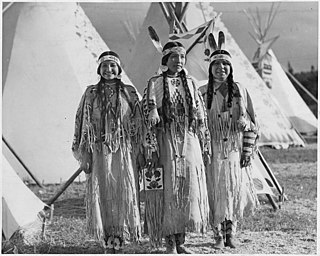 W
WThe Sahaptin are a number of Native American tribes who speak dialects of the Sahaptin language. The Sahaptin tribes inhabited territory along the Columbia River and its tributaries in the Pacific Northwest region of the United States. Sahaptin-speaking peoples included the Klickitat, Kittitas, Yakama, Wanapum, Palus, Lower Snake, Walla Walla, Umatilla, and Tenino.
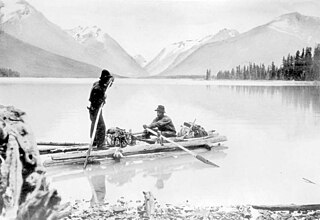 W
WTahltan are a First Nations people of the Athabaskan-speaking ethnolinguistic group who live in northern British Columbia around Telegraph Creek, Dease Lake, and Iskut. The Tahltan constitute the fourth division of the Nahane.
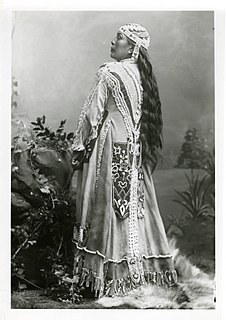 W
WThe Takelma are a Native American people who originally lived in the Rogue Valley of interior southwestern Oregon.
 W
WThe Confederated Tribes of the Umatilla Indian Reservation are the federally recognized confederations of three Sahaptin-speaking Native American tribes who traditionally inhabited the Columbia River Plateau region: the Cayuse, Umatilla, and Walla Walla.
 W
WThe Umatilla are a Sahaptin-speaking Native American tribe who traditionally inhabited the Columbia Plateau region of the northwestern United States, along the Umatilla and Columbia rivers.
 W
WThe Umpqua are an umbrella group of several distinct tribal entities of Native Americans of the Umpqua Basin in present-day south central Oregon in the United States. The tribes spoke several different languages: Siuslaw, Yoncalla, Upper Umpqua, Takelma, and possibly the Molalla language - all Penutian languages with the exception of "Upper Umpqua" which are part of the Oregon Athabaskan languages. The area south of Roseburg is known as the Umpqua Valley. The name "Umpqua" dates back to as recently as the early 1800s, when the Coquille tribe of Native Americans inhabited the area. ... Other theories report that "Umpqua" means "thundering water" or "dancing water" or "bring across the river."
 W
WWalla Walla, sometimes Waluulapam, are a Sahaptin indigenous people of the Northwest Plateau. The duplication in their name expresses the diminutive form. The name Walla Walla is translated several ways but most often as "many waters."
 W
WThe Tenino people, commonly known today as the Warm Springs bands, are several Sahaptin Native American subtribes which historically occupied territory located in the North-Central portion of the American state of Oregon. The Tenino people included four localized subtribes — the Tygh or "Upper Deschutes" divided in Tayxɫáma, Tiɫxniɫáma and Mliɫáma, the Wyam (Wayámɫáma) (Wayámpam) or "Lower Deschutes", also known as "Celilo Indians", the Dalles Tenino or "Tinainu (Tinaynuɫáma)", also known as "Tenino proper"; and the Dock-Spus (Tukspush) (Takspasɫáma) or "John Day."
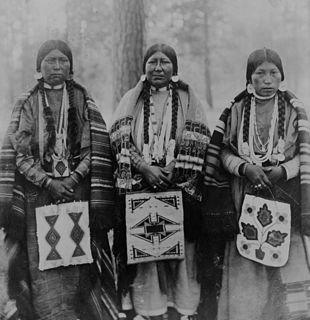 W
WThe Confederated Tribes of Warm Springs is a recognized tribe made of three tribes who put together a confederation of Native American tribes who currently live on and govern the Warm Springs Indian Reservation in the U.S. state of Oregon.
 W
WWasco-Wishram are two closely related Chinook Indian tribes from the Columbia River in Oregon. Today the tribes are part of the Confederated Tribes of Warm Springs living in the Warm Springs Indian Reservation in Oregon and Confederated Tribes and Bands of the Yakama Nation living in the Yakama Indian Reservation in Washington.
 W
WWhite Bird, also referred to as White Pelican, was leader, war chief and tooat of the Lamátta or Lamtáama band of the Nez Perce tribe with the Lamata village along the Salmon River. His band and the village took its name from Lahmatta, by which White Bird Canyon was known to the Nez Perce.
 W
WThe Yakama are a Native American tribe with nearly 10,851 members, based primarily in eastern Washington state.
 W
WPiupiumaksmaks was head chief of the Walla Walla tribe and son to the preceding chief Tumatapum. His name meant Yellow Bird, but it was often mistranslated as Yellow Serpent by Europeans.